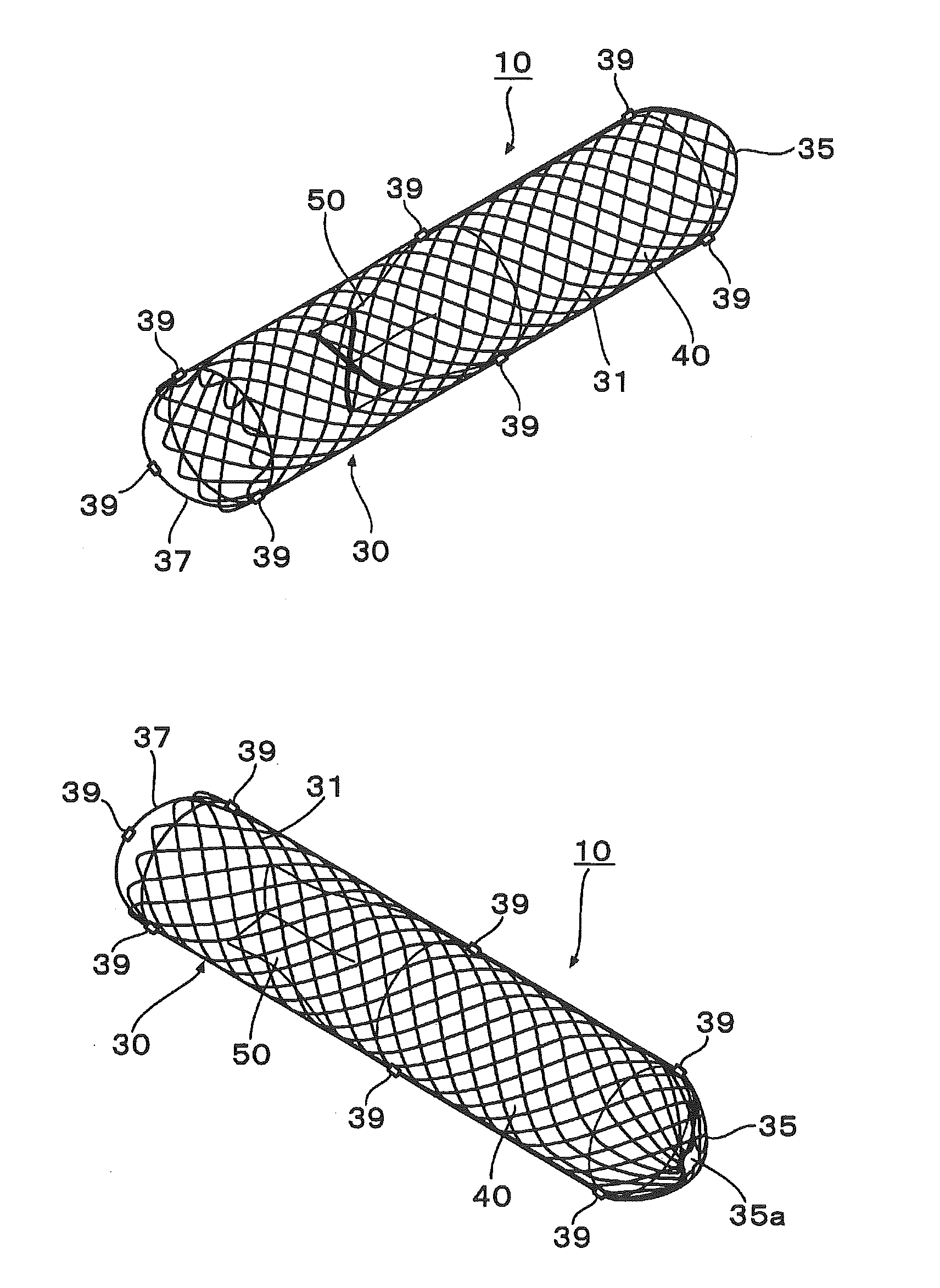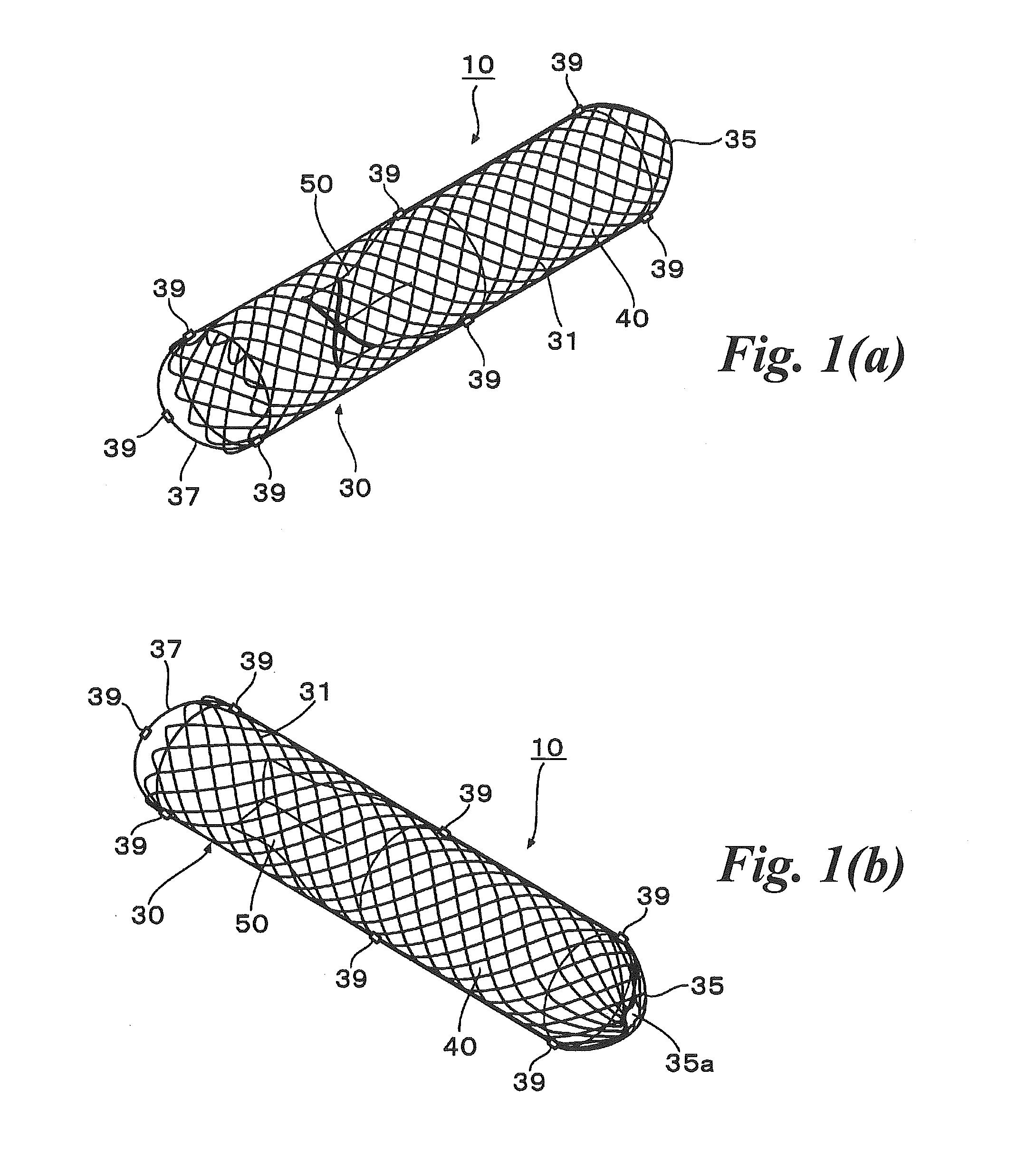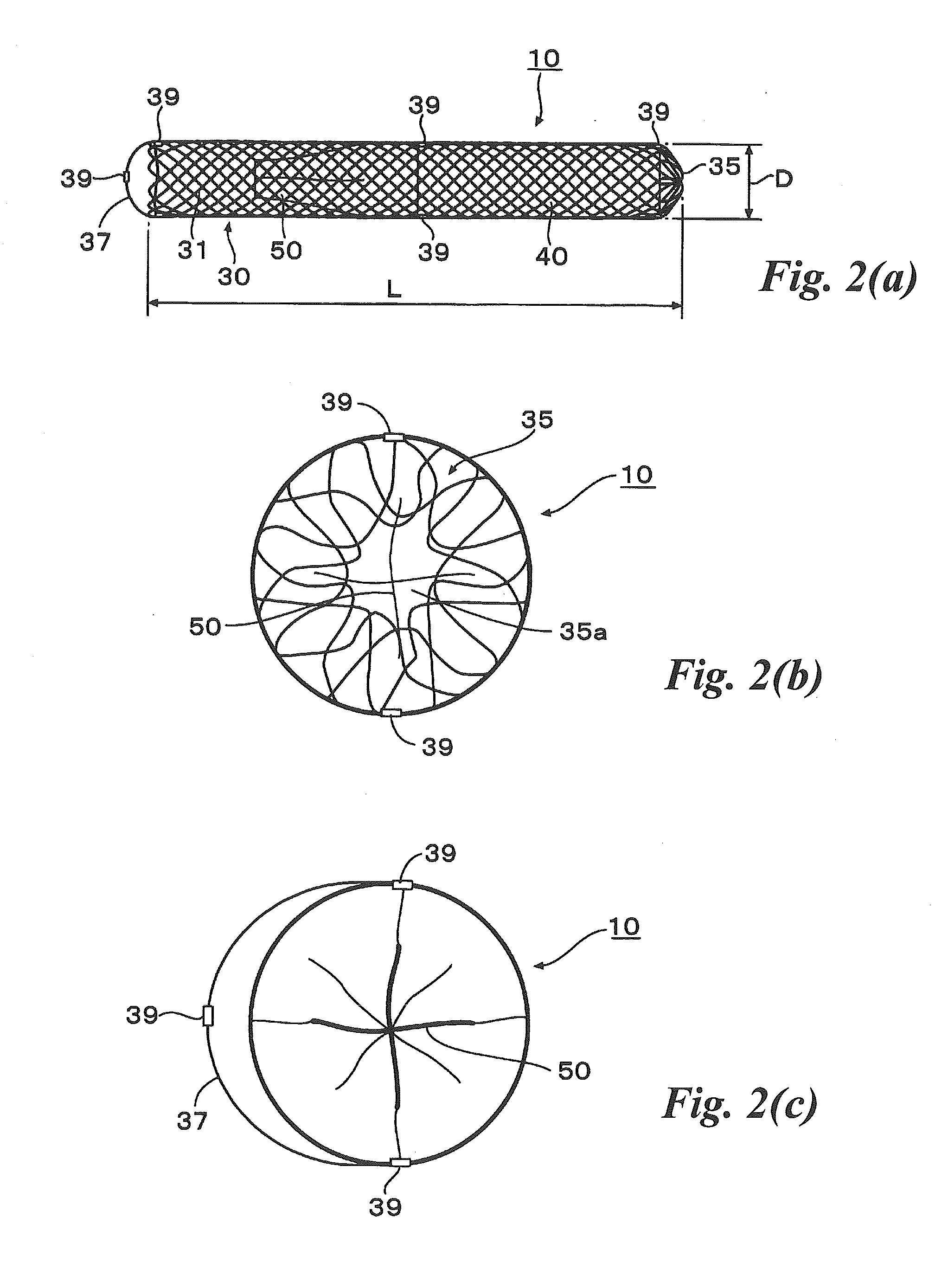Abdominal cavity-vein shunt stent
a technology of shunt stent and abdominal cavity, which is applied in the field of abdominal cavityvein shunt stent, can solve problems such as damage to the catheter, and achieve the effects of lightening the load on the patient at the time of stent placement and lightening the load on the patient after stent placemen
- Summary
- Abstract
- Description
- Claims
- Application Information
AI Technical Summary
Benefits of technology
Problems solved by technology
Method used
Image
Examples
Embodiment Construction
[0032]An embodiment of an abdominal cavity-vein shunt stent according to the invention will be described below with reference to the drawings.
[0033]As shown in FIGS. 3 and 4, the abdominal cavity-vein shunt stent 10 (“stent 10”) is provided for transporting ascites accumulated in the inside of the abdominal cavity 1 to a vascular system. The stent 10 extends cylindrically long and has a stent body 30 which has one end to be disposed in the intrahepatic vein 3a of the liver 3, and the other end for passing through the liver parenchyma 3b to be disposed in the abdominal cavity 1.
[0034]Referring also to FIGS. 1 and 2, the stent body 30 in this embodiment is formed into a cylindrical shape by braiding and / or enlacing wire 31 having a predetermined diameter. The stent body 30 is shaped like mesh having a predetermined pattern, and is of a so-called self-expanding type, that is, diametrically contracts with application of external force but diametrically expands in the free state without ...
PUM
 Login to View More
Login to View More Abstract
Description
Claims
Application Information
 Login to View More
Login to View More - R&D
- Intellectual Property
- Life Sciences
- Materials
- Tech Scout
- Unparalleled Data Quality
- Higher Quality Content
- 60% Fewer Hallucinations
Browse by: Latest US Patents, China's latest patents, Technical Efficacy Thesaurus, Application Domain, Technology Topic, Popular Technical Reports.
© 2025 PatSnap. All rights reserved.Legal|Privacy policy|Modern Slavery Act Transparency Statement|Sitemap|About US| Contact US: help@patsnap.com



